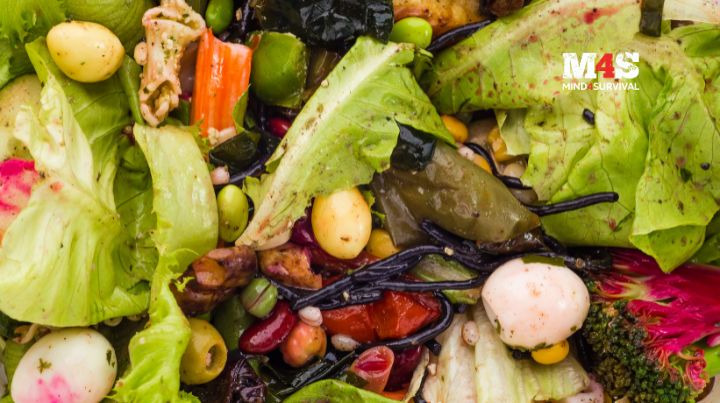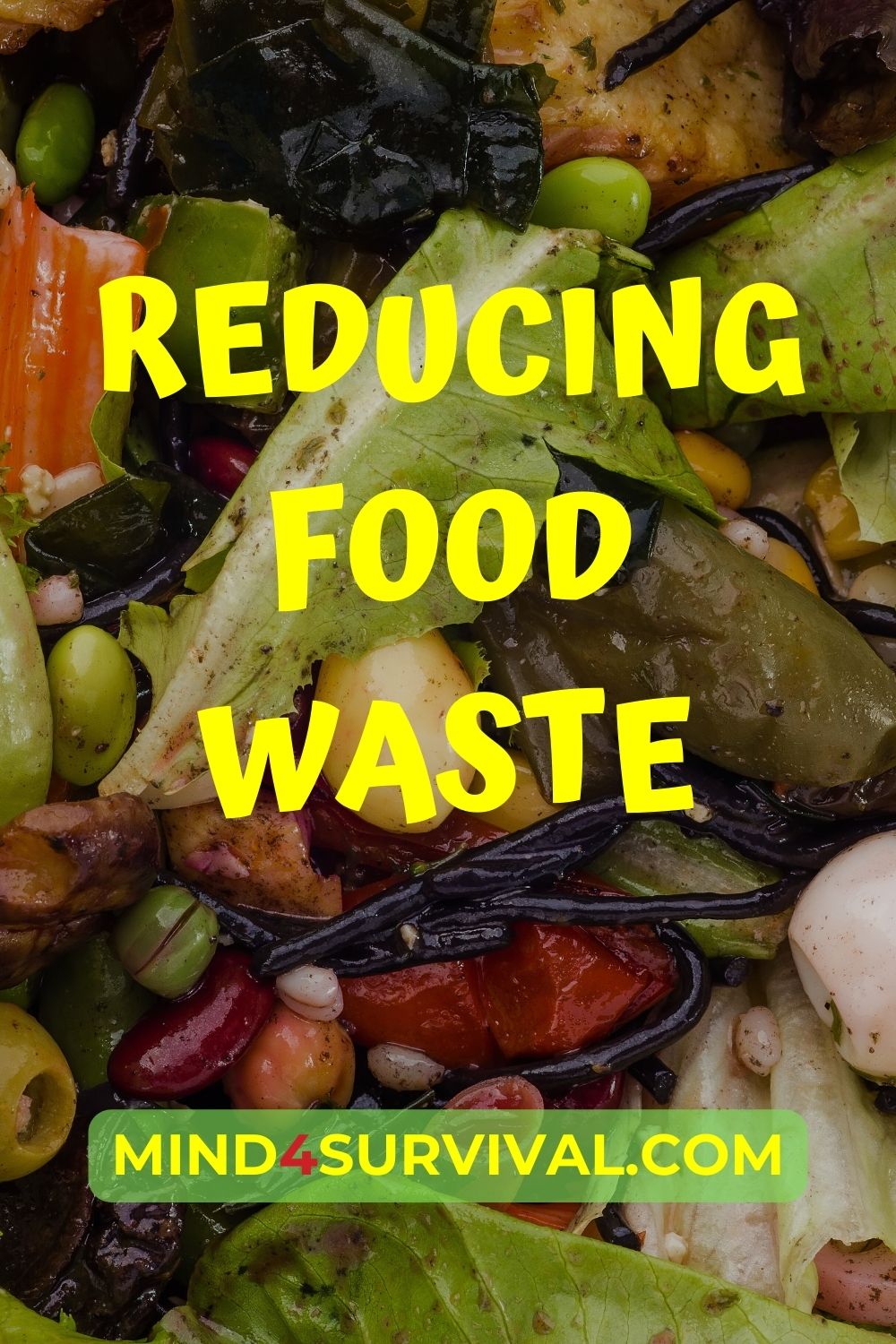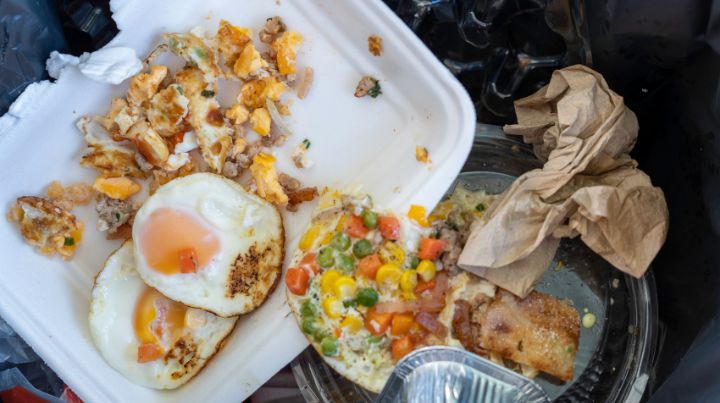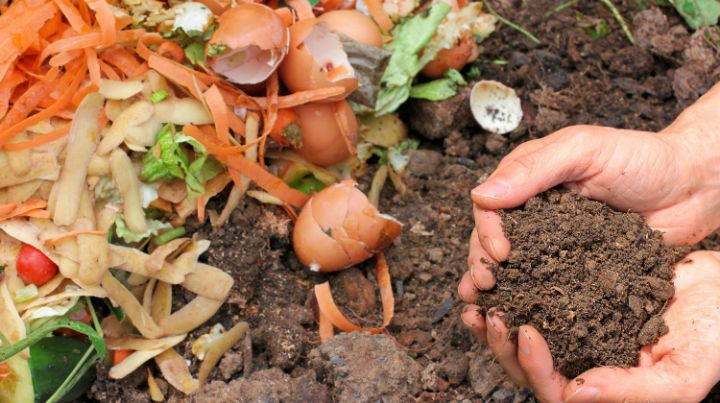Reducing Food Waste

Did you know that September 29 is the International Day of Awareness of Food Loss and Waste? In the U.S., nearly 40% of the food produced is wasted! This is a far cry from the “Waste not, want not” mentality of our forefathers, and as many of us talk about wanting to return to founding principles, a personal orientation toward thriftiness would be a good place to start.
Most of us, quite honestly, can’t afford to waste food anymore. Inflation is picking back up again. While not as bad as last year’s rates of over 8%, the official year-over-year inflation rate for August 2023 was 3.7%. That means that goods in August, on average, this year cost 3.7% more than last year. And last year, we were seeing prices on average nearly ten percent higher than in 2021. So unless you’ve gotten some really nice pay raises the last two years, you’re probably looking to save money.
Monitoring where our food dollars go is a great place to start. Let’s look at where food gets wasted, and see what we can do about it.
Tossing Food That’s Still Good
People often toss food because it’s past the expiration date, and they fear food poisoning. But much of that food is still perfectly good; it just needs some extra scrutiny.
First, look at the food carefully. Is there an expiration date or just a “sell by” date? The dates on most food don’t necessarily mean that food will be rotten afterward; it just means the food may not have the best taste and texture. That doesn’t mean it needs to be thrown out.
Eggs, for example, may not make a light and airy soufflé after sitting in your fridge for a month. But they’ll be perfectly safe to eat, and will actually be better for hard-boiling. When in doubt, drop an egg in a cup of water. If it floats, it’s no longer fresh.
If food smells bad and is covered in mold, by all means don’t eat it. But if food that has been stored properly looks and smells fine, it probably is.
Buying More Than Needed
Food is also wasted when people go to the grocery store while hungry and just grab whatever. Don’t shop while hungry!
Planning meals in advance can help reduce the chance of buying food you won’t use. If you are used to only thinking one meal ahead, you can start by dedicating one chunk of time per week to plan a set of meals. Write down needed ingredients, hit the grocery store at a time of day when you’re not particularly hungry, and stick to the list. This will help you avoid buying things you don’t need.
But are you easily tempted by sales at the store? Will you buy ten of something you don’t need because it’s a good price?
Again, this is something that you can usually plan for. By all means, take advantage of sales. But work them into your schedule. Grocery stores typically post sales in advance, especially if you sign up for their online coupons. For example, if your store resets their prices every Wednesday, Wednesday evening might be a good time to scroll through your phone to find what’s on sale, and plan your meals around the sale items.
Buying only what you’ll actually consume will keep a lot of food from getting thrown out.
What To Do With Leftovers?
If you’re cooking for a group of people, or getting food from a restaurant, sometimes it’s hard to get just the right amount. But there’s no need to toss stray extras. What’s left on your plate? Is it leftover sausage and mushrooms? Leftover veggies? You can mix those with eggs the next day for a large omelet or frittata. Meat and veggies go well in soups, too, and making at least one batch of soup per week can be a good way to use up stray vegetables.
In fact, I’ve got two go-to recipes for when I’ve got random vegetables that need to be used up: beef and vegetable soup, and shepherd’s pie. You can check out recipes for both here. In both of these recipes, I will substitute whatever vegetables I have on hand for some of the peas, beans, corn, or carrots.
If you like Asian food, you could also use leftovers in fried rice. If I’ve got vegetables lying around, sometimes I will fry them in bacon grease along with cooked rice. Afterwards, I just season it with soy sauce and garlic salt. It tastes good, is cheap, and mostly uses leftovers.
Dealing With Surpluses
Maybe it was a good year for apples in your neighborhood. Maybe you had the best fishing trip ever. Now your freezers are packed.
Like organizing your shopping lists, organizing your freezer space can help you work through your food in an orderly fashion. If you have a large freezer intended for entire animals, consider packing certain groups of meat together to help you keep track of what you’ve gotten processed when. For example, right now I’ve got portions of two lambs, two pigs, and a steer in my big freezer. But I keep meat from the same animal tied together to help me work through the older pieces first.
You could also consider canning or dehydrating an excess of fresh food, to convert into something shelf-stable. To find out more, check out our article here.
Composting
Unfortunately, sometimes food goes bad anyway. When this happens, having a compost heap lets you toss food without feeling like it’s being wasted.
Outdoor Composting
If you’ve got a decent-sized backyard, composting can just consist of a pile of food scraps and lawn trimmings that you turn and water once in a while. I had a nice compost heap in the corner of my yard in the suburbs, and that was really all there was to it. Pine needles from two large trees provided the carbon that mixed in with the food scraps to prevent it from smelling. I dug into it once or twice a year to get new soil for my vegetable garden. We fed the compost heap with kitchen scraps, which fed the soil in the garden, which ultimately fed us again in the next growing season.
Apartment dwellers, or people on very small lots, shouldn’t automatically dismiss composting. It just looks a little different. You would need something enclosed to avoid smells. If you have a balcony, you could consider putting a compost container there, but be aware of rats and raccoons.
Indoor Composting
If you want to compost indoors, you could look into a vermicomposting kit. This is an inexpensive way to compost vegetable scraps which also makes a good science project for small children.
Some enthusiasts claim that bokashi is a way to compost meat and dairy scraps indoors, but this is only partially true. A bokashi kit will help break down meat and dairy products so that they don’t smell. If you have a composting bucket system on a balcony, and you’re afraid of smells that could attract rats (a very reasonable concern), giving fragrant food items an initial bokashi fermenting stage indoors might make sense.
Just understand, before spending any money, that bokashi kits do not produce fully finished, garden-ready compost. You would still need another composting bin with organic, carbon-rich material.
Making Friends With Farmers
Another option would be to find friends with animals. As urban flocks become increasingly common, more and more city-dwellers will probably find they know people with backyard birds. Chickens love melon rinds, potato peels, and other odds and ends from the kitchen.
Depending on your part of the country, you may live near farms with goats or pigs that will accept damaged garden produce. For example, there is a pig owner in my area who advertises on Facebook Marketplace every year for people to bring her their jack-o-lanterns in November. She gets free pumpkins for her pigs, and the people in town keep their old pumpkins out of the landfill.
Donations
In the past, some charitable organizations have been sued by recipients of donated food, claiming it made them sick. This has understandably made restaurants, grocery stores, cafeterias, and any handler of large quantities of food very wary of donating leftover food. Legally, the impression has been that it is far safer to throw food away, rather than donate it, because all it takes is one freeloader to ruin your business.
However, there are legal protections in place to protect Good Samaritans. Thanks to the Good Samaritan Food Donation Act of 1996, charitable organizations providing food have limited liability protection against lawsuits, provided that the food looked good and was given in good faith. Specific laws vary state to state, but it is not quite as easy to sue food donors as it used to be. Restaurants, grocery store owners, and farmers do not want to waste food; they have just been stuck in a legal system that makes it seem like a sensible option.
Final Thoughts
Growing some of your own food, even potted vegetables on a balcony, can help you understand the work that goes into food production. Once you become part of the production cycle, it’s a lot harder to toss food simply because you connect it with work. Wasting food seems like more of a shame.
Food, and fertilizers needed to grow food, are also internationally traded commodities experiencing a lot of turbulence due to the worldwide political situation right now. Inflation may slow down. Or it may not. Most of us don’t have a lot of control over that kind of thing.
But we can control what we do with the food that is in our midst. A lot of food is still being thrown out, even as average Americans struggle to pay their bills.
This International Day of Awareness of Food Loss and Waste, let’s appreciate that most of us still have a lot food on the store shelves. If we embrace habits now that help us use that food in the most efficient manner possible, we will be better equipped to handle shortages that may come.
Additional Resources:
- Is a Home Freeze Dryer Worth the Investment?
- How to Store Emergency Food for the Longest Shelf Life
- The Best Dehydrator: 15 Best Dehydrator Reviews (2023)
- 7 Ways to Cook Off-Grid

Don't Miss Out!
Join the thousands of people who rely on Mind4Survival preparedness advice by subscribing to our FREE newsletter.
- Practical preparedness information
- Zero Spam
- < 0.25% of people unsubscribe




Join Mind4Survival!
Stay informed by joining the Mind4Survival! 100% Secure! 0% Spam!
Follow Us!
Affiliate Disclosure
Mind4Survival is a free, reader-supported information resource. If you make a purchase through our link, we may, at no cost to you, receive an affiliate commission.




I believe that, like most quoted statistics, the “40%” is bunk. Sure, there’s food waste, but that figure is not at all proveable. I believe it is another figure tossed out there to scare us.